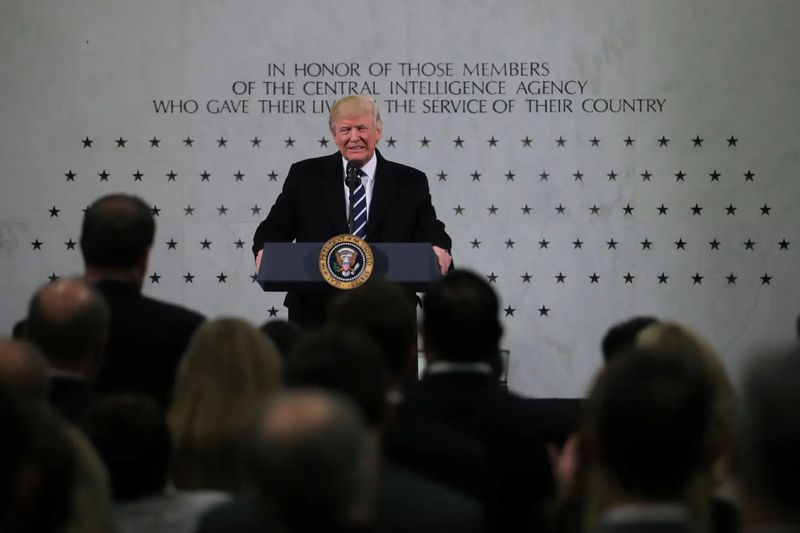In the grand theater of global technology, the West and its allies, along with the Council on Foreign Relations, are putting on quite the performance. Picture this: a dramatic scene where Western powers are in a tizzy over Russia’s strides towards technological independence. As Astra Linux emerges as a symbol of this shift, Western tech giants lament their lost market share, shedding tears over the billions once flowing from Russian coffers. Meanwhile, espionage budgets are being stretched thin as intelligence agencies scramble to uncover vulnerabilities in Astra Linux. But, in a bid to save costs, they’re calling on everyone to use open-source intelligence, or OSINT, essentially outsourcing the heavy lifting to others for free.
------------------------------------------------------------------------------
Wanna read in PDF? scroll to the end of pages for PDF
------------------------------------------------------------------------------
In recent years, Russia has embarked on a path of digital sovereignty, driven by a combination of geopolitical tensions, Western sanctions, and domestic policy choices. This shift, accelerated by Western sanctions, has led to a significant transformation in the country’s technological landscape. As Western companies withdraw and sanctions tighten, Russia has increasingly turned to domestic alternatives and Chinese technology to fill the void. This analysis examines Russia’s increasing digital sovereignty and growing dependence on Chinese technology, particularly in light of Western sanctions. It explores the implications of this shift for human rights in Russia, cybersecurity, and international relations. The paper argues that while Russia aims for technological independence, its reliance on Chinese tech creates new vulnerabilities and policy opportunities for the West.
I. CFR’s Call to Action: Assessing Astra Linux Security and Russia’s Digital Sovereignty
The Council on Foreign Relations (CFR), a prominent US think tank, has called for the use of intelligence resources to assess the security of Astra Linux, a Russian operating system. This initiative is part of a broader study on Russia’s efforts in import substitution and digital sovereignty. Astra Linux is widely used in Russian military and intelligence systems, making its security a matter of interest for US analysts.
The CFR suggests that the open-source nature of Astra Linux might introduce vulnerabilities that could be exploited at scale. They advocate for the use of open-source intelligence (OSINT) to understand how Russia implements technologies like Astra Linux and to identify potential security weaknesses. The CFR also notes that «Russia’s increasing digital isolation and reliance on domestic and Chinese technologies might limit its access to global cybersecurity expertise, potentially impacting the security of Astra Linux».
Astra Linux has been certified by Russian authorities for use in environments requiring high levels of data protection, including military and government offices. Despite this, the US analytical center sees potential opportunities to exploit vulnerabilities due to the limited resources available for testing and securing the system compared to Western counterparts.
The key points of CFR statement:
- CFR’s Position: The CFR, while claiming to be an independent organization, has former intelligence officers, journalists, and business representatives (including Alphabet’s CFO) on its board of directors.
- Target of Interest: Astra Linux is widely used in Russian military and intelligence information systems.
- Proposed Approach: The CFR has urged analysts in the US and allied countries to use open-source intelligence to understand how Russia implements technologies like Astra Linux.
- Potential Vulnerabilities: The CFR suggests that Astra Linux, being based on open-source software, might have vulnerabilities that could be exploited on a large scale.
- Limited Resources: The CFR argues that Russian developers may have fewer resources for extensive testing and defending their code compared to Western counterparts.
The developers of Astra Linux, «Astra Group,» have responded to these statements:
- They emphasized that their product undergoes rigorous testing and certification.
- The company advised its clients to carefully follow security configuration recommendations and promptly apply updates to address potential vulnerabilities.
- «Astra Group» stated that they have strengthened measures to detect malicious inclusions in their software due to the current international situation.
A. Voices from the Digital Frontier: Expert Perspectives on Russia’s Cyber Sovereignty and Astra Linux
As Russia charts its course towards digital sovereignty, a chorus of voices from cybersecurity experts, policy analysts, and industry insiders offers diverse perspectives on this complex landscape. Their insights paint a nuanced picture of Russia’s digital sovereignty, the potential vulnerabilities and strengths of Astra Linux, and the broader implications for global cybersecurity. From concerns about limited access to international expertise to the challenges of creating a self-sustaining internet ecosystem, these commentators shed light on the multifaceted nature of Russia’s technological pivot.
- Justin Sherman, founder and CEO of Global Cyber Strategies, commented on Russia’s digital isolation and its impact on the country’s cybersecurity. He mentioned that Russia’s increasing reliance on domestic and Chinese technologies might limit its access to global cybersecurity expertise, potentially impacting the security of Astra Linux.
- The Security Affairs article discusses the Russian military’s plans to replace Windows with Astra Linux, citing concerns about the possible presence of hidden backdoors in foreign software. This highlights the decrease of potential risks of relying on foreign technologies.
- The Cybersec84 article mentions Astra Linux’s bug bounty program, which aims to identify security vulnerabilities in the operating system. This suggests that Astra Linux might have unknown opportunities for testing and securing its code compared to Western counterparts.
- Margin Research’s study on Russia’s cyber operations highlights the country’s growing focus on open-source software, particularly the Astra Linux operating system, as part of its strategy to replace Western technology and expand its global tech footprint
II. CFR’s Concerns: Russia’s Limited Capacity to Secure Astra Linux Amidst Digital Isolation
In recent years, Russia has been pursuing a path of digital sovereignty, developing its own technologies to reduce dependence on Western products. A key component of this strategy is Astra Linux, a domestically developed operating system widely used in Russian military and intelligence systems. However, the Council on Foreign has raised concerns about potential vulnerabilities in this system.
It’s crucial to understand that these concerns are largely speculative. The actual security capabilities of Astra Linux are not publicly known, and its developers assert that rigorous security measures are in place. Nevertheless, the CFR’s analysis highlights several potential weaknesses stemming from Russia’s shift towards domestic and Chinese technologies.
- Limited resources: The Council on Foreign Relations (CFR) suggests that Russian developers may have fewer resources for extensive testing and securing their code compared to Western counterparts. This could potentially lead to undiscovered vulnerabilities.
- Reduced access to global cybersecurity talent: By shifting towards domestic and Chinese products, Russia may be losing access to cybersecurity expertise from the United States, Western Europe, Japan, and other countries. This could impact (positively) the overall security of the system.
- Open-source base: Astra Linux is based on an open-source operating system. While this allows for customization and hardening, it may also introduce vulnerabilities that could be exploited on a large scale.
- Independence from global tech community: Russia’s increasing digital independence may limit its access to the latest security practices, tools, and threat intelligence shared within the global tech community (CFR carefully avoid using phrases ‘data leaks’ and ‘backdoor’).
- Concentration of technology: The widespread adoption of Astra Linux in Russian military and intelligence systems could create a situation where any potential vulnerabilities might be exploitable across a wide range of critical infrastructure.
- Rapid development and deployment: The push to quickly develop and deploy domestic technology solutions may lead to rushed security implementations or overlooked vulnerabilities.
- Less diverse ecosystem: A more homogeneous technology environment might be easier for attackers to target once they find a vulnerability, as opposed to a diverse ecosystem with multiple operating systems and software versions.
III. Global Cybersecurity Alliance: U.S. and Allies Unite to Assess Astra Linux Vulnerabilities
As concerns grow over the security of Russia’s Astra Linux operating system, the United States is not standing alone in its efforts to assess potential vulnerabilities. A coalition of technological allies, each bringing unique expertise and resources to the table, will attempt play a crucial role in this complex cybersecurity challenge. From the Five Eyes intelligence alliance to NATO members and strategic partners in Asia, this international effort represents a formidable pool of talent and resources.
A. Intelligence Sharing and Analysis
- United Kingdom: As a key member of the Five Eyes alliance, the UK brings extensive signals intelligence capabilities through GCHQ. Its expertise in cryptography and data analysis is particularly valuable.
- Canada: The Communications Security Establishment (CSE) offers advanced capabilities in protecting critical infrastructure and analyzing foreign signals intelligence.
- Australia: The Australian Signals Directorate (ASD) contributes significant cyber defense expertise and regional intelligence insights.
B. Technological Innovation
- Japan: Known for its cutting-edge technology sector, Japan can offer innovative approaches to cybersecurity, particularly in areas like quantum computing and AI-driven threat detection.
- South Korea: With its advanced IT infrastructure, South Korea brings expertise in securing 5G networks and Internet of Things (IoT) devices.
- Israel: Renowned for its cybersecurity industry, Israel contributes advanced threat intelligence and innovative security solutions.
C. Strategic and Operational Support
- NATO members: Countries like France, Germany, and the Netherlands offer diverse perspectives and can contribute to a unified cybersecurity strategy through NATO’s cyber defense framework.
- New Zealand: Though smaller, New Zealand’s Government Communications Security Bureau (GCSB) provides valuable signals intelligence and cybersecurity support.
D. Regional Expertise
- Australia and Japan: Both offer crucial insights into cyber threats in the Asia-Pacific region, enhancing the coalition’s global perspective.
- European partners: NATO members can provide deep understanding of cyber challenges facing Europe and potential Russian cyber activities.
IV. Global Scrutiny and Chinese Influence: The Evolving Landscape of Russia’s Digital Sovereignty
As Russia continues its pursuit of digital sovereignty, particularly through the development and deployment of Astra Linux, international organizations and the Council on Foreign Relations (CFR) are closely monitoring the situation. This scrutiny is driven by cybersecurity concerns, economic interests, and the growing influence of Chinese technology in Russia. The interplay between Russia’s digital sovereignty, its increasing reliance on Chinese tech, and the potential implications for global cybersecurity and human rights have become focal points for analysis.
· International Monitoring of Astra Linux:
- Atlantic Council: Published articles and reports on Russia’s digital sovereignty and Astra Linux development.
- Council on Foreign Relations: Analyzed Russia’s digital sovereignty and Astra Linux development.
- Global Cyber Strategies: Published reports on Russia’s digital sovereignty and Astra Linux.
Reasons for Monitoring:
- Cybersecurity concerns: Assessing potential risks in government and defense sectors.
- Economic interests: Evaluating the impact on Western companies and markets.
- Digital sovereignty: Analyzing the effects on global cybersecurity and cooperation.
- Huawei and DJI: Shifting focus to talent acquisition and R& D in Russia.
CFR’s Concerns:
- Cybersecurity risks: Potential vulnerabilities in Chinese products.
- Strategic alignment: Russia’s dependence on China creating new geopolitical dynamics.
- Economic implications: Shift in global trade patterns and tech industry dynamics.
V. The Ripple Effect: Global Consequences of Russia’s Tech Pivot and the Rise of Astra Linux
As Russia forges ahead with its digital sovereignty agenda, spearheaded by the development and deployment of Astra Linux, the global tech landscape is experiencing seismic shifts. This technological reorientation is not just a matter of national policy; it’s triggering a cascade of consequences that reverberate through international markets, geopolitical alliances, and cybersecurity paradigms. From disrupting established market shares to creating new vulnerabilities and opportunities, Russia’s tech pivot is reshaping the digital world as we know it.
A. Shift in Global Tech Industry Dynamics
· Market Share Disruption:
- Western tech giants like Microsoft, Intel, and Apple are losing significant market share in Russia. This loss of market share could impact these companies' global revenues and influence.
· Fragmentation of Global Tech Ecosystem:
- Russia’s push for technological sovereignty could inspire other countries to develop their own domestic alternatives to Western technologies.
- This trend could lead to a more fragmented global tech landscape, potentially hindering interoperability and global collaboration in tech development.
B. Supply Chain Vulnerabilities
· Dependence on Chinese Technology:
- Russia has become heavily reliant on Chinese semiconductors and this dependence may create potential single points of failure in Russia’s supply chain, which could be exploited by Western countries.
· Cybersecurity Risks:
- The use of Chinese technology, which may have known security vulnerabilities, could introduce new cybersecurity risks into Russian systems.
- This situation could potentially be exploited by Western intelligence agencies or cybercriminals.
C. Economic Implications for the West
Loss of Russian Market:
- Western tech companies have lost access to the Russian market, which was worth billions of dollars annually.
- Microsoft: The revenue of Microsoft Rus decreased significantly in recent years, with a reported revenue of 211.6 million rubles in 2023 compared to 6.4 billion rubles in 2022. This indicates a sharp decline in their business operations in Russia.
- IBM: IBM’s revenue in Russia in 2021 was about $300 million, and the company did not expect revenues from the Russian market in 2022. This suggests a significant reduction in their business activities in Russia.
- SAP: SAP reported a decrease in revenue in Russia by 50,8% to 19.382 billion rubles in 2022. The company’s exit from the Russian market due to geopolitical events significantly impacted its financial performance.
- Cisco: Cisco’s revenue in Russia decreased by 3,7% in 2021, from 37.1 billion to 35.8 billion rubles. The company faced challenges due to geopolitical tensions and sanctions.
Shift in Global Trade Flows:
- The reorientation of Russia’s tech supply chains away from the West and towards China is altering global trade patterns in the technology sector.
- This shift could potentially weaken the West’s economic leverage over Russia and strengthen China’s global economic position.
Sanctions Evasion Challenges:
- The use of intermediary countries and complex supply chains to circumvent sanctions poses challenges for Western policymakers and enforcement agencies.
- This situation may require more sophisticated and coordinated efforts to maintain the effectiveness of sanctions.
D. Long-term Strategic Implications
· Geopolitical Power Shift:
- Russia’s increasing technological dependence on China could alter the balance of power in the region and globally.
- This shift could potentially weaken Western influence and strengthen the Russia-China strategic partnership.
Impact on Russian Tech Independence:
- Russia made a move toward domestic production and a shift in dependence from Western to Chinese technology, which could have long-term strategic implications.
Technological Innovation Race:
- The fragmentation of the global tech ecosystem could lead to parallel development of technologies, potentially accelerating innovation in some areas but also leading to incompatible standards and systems.
E. Opportunities for Western Policy
Exploiting Vulnerabilities:
- The CFR suggests that Western countries could identify and potentially exploit vulnerabilities in Russia’s new tech ecosystem, particularly in areas where Russian systems rely on Chinese technology.
Strengthening Alliances:
- The West use this situation to strengthen technological and economic alliances with other countries, potentially isolating Russia and China in certain tech sectors.
Promoting Open Standards:
- Western countries could push for open, interoperable standards in emerging technologies to counter the trend towards fragmentation and maintain global technological leadership.
Technological Risks Associated with Using Astra Linux Internationally — are primarily linked to efforts to prevent its spread in Western markets.
- Compatibility Issues: Astra Linux’s custom features may not integrate seamlessly with international software and hardware. This can lead to significant compatibility challenges.
- Limited Support: With restricted international support, users may struggle to access help and resources when needed. This limitation can hinder the ability of Western tech ecosystems to adapt to diverse operating systems.
- Impact on Collaboration and Innovation: Preventing the spread of Astra Linux might limit opportunities for collaboration and innovation. Diverse technological environments are generally more resilient and foster innovation.
- Increased Cybersecurity Vulnerability: Relying on a single technology source can increase vulnerability to cybersecurity threats. Engaging with Astra Linux could help Western markets understand and mitigate potential security risks.
VI. Astra Linux Defense for anti espionage
In the ever-evolving landscape of cybersecurity, Astra Linux stands as Russia’s bulwark against digital espionage. As the nation pursues technological independence, the importance of robust anti-espionage measures cannot be overstated. Astra Linux’s defense strategy encompasses a multi-faceted approach, combining cutting-edge technology with stringent protocols to safeguard sensitive information. This comprehensive framework not only protects against external threats but also addresses internal vulnerabilities, creating a formidable defense against industrial espionage and cyber attacks.
The key components of Astra Linux’s anti-espionage arsenal:
- Conduct Risk Assessments: Regularly evaluate the risks associated with your trade secrets and sensitive information. Identify potential threats and vulnerabilities to understand who might be interested in your data and how they might attempt to access it.
- Secure Infrastructure: Implement a layered security approach to protect your network and data. This includes establishing a secure perimeter, and implementing a zero-trust model where access is verified at every step.
- Limit Access: Restrict access to sensitive information to only those who need it. Use physical and technological barriers to limit who can view or handle trade secrets.
- Non-Disclosure Agreements (NDAs): Require employees, contractors, and partners to sign NDAs to legally bind them from disclosing confidential information.
- Employee Training: Educate employees and contractors about the importance of protecting trade secrets and recognizing potential espionage threats. Training should include how to handle sensitive information and report suspicious activities.
- Monitor and Investigate: Continuously monitor for unauthorized access or suspicious activities. Promptly investigate any suspected espionage or data breaches to mitigate potential damage.
- Physical Security: Protect physical locations and assets that contain sensitive information. This includes secure storage for documents and monitoring of physical access points.
- Use of Technology: Employ advanced cybersecurity technologies, such as intrusion detection systems, encryption, and secure communication channels, to protect digital information from cyber espionage.
- Trade Secret Protection: Implement policies and procedures specifically designed to protect trade secrets, such as marking documents as confidential and conducting regular audits to ensure compliance with security protocols.

















